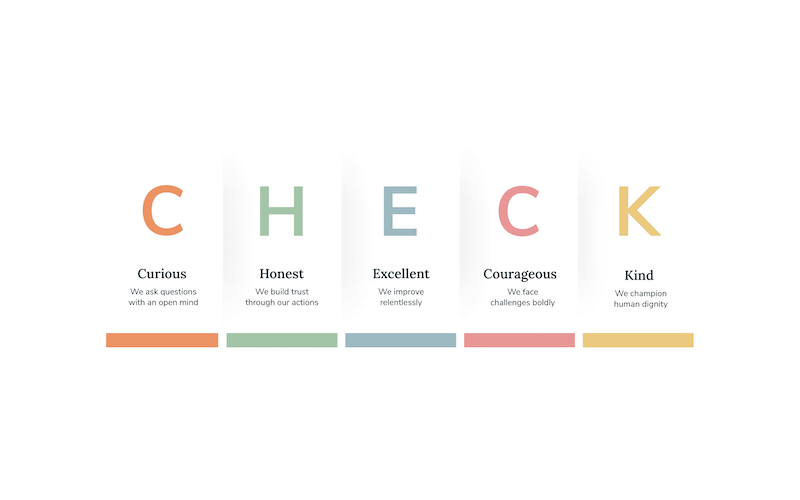10 Descriptive Research Examples to Help You Design Your Own

To improve business processes and boost sales, companies need to understand their market, customers, and competitors.
Descriptive research helps businesses see what’s really happening. It uncovers trends, behaviors, and patterns, without trying to change them – it is like taking a photo of your business environment. You get a clear picture of reality, which helps you make smarter decisions, spot hidden opportunities, and enhance your business processes.
It can also be used by researchers to assess demographic data, which can be valuable to businesses, organizations, governments, and scientific institutions.
Marketers, analysts, and researchers can all use descriptive research to collect and understand useful data. In this article, you’ll learn what descriptive research is, when to use it, its main advantages, and how to design such studies. You’ll also see real examples with calculations to help you create your own projects.
What is descriptive research?
Descriptive research is quantitative or qualitative research aiming to describe aspects of a phenomenon or group, making it a very common form of research
It is not experimental and doesn’t aim to test cause-and-effect relationships. Instead, it focuses on observing and describing what is happening, rather than explaining why or how it happens. Simply put, descriptive research answers the question "what?" rather than "why?" or "how?"
It is typically used when businesses or researchers want to get an accurate picture of the situation at a particular point in time – such as opinions per income group, product usage, customer behavior, or other target variables. It’s particularly helpful to researchers measuring trends over time.
Descriptive research is widely used in market research, social sciences research, healthcare research, governmental surveys, and business analysis to gather information that can be utilized to inform strategy, policies, or operational decisions.
Here are a few cases when this kind of research is applied:
- A study of the distribution of age groups among app users.
- A survey of students about how many hours per week they spend studying.
- Analysis of product sales by region over the past year.
What is descriptive research design?
Descriptive research design is the algorithm or structure that outlines how descriptive research will be conducted. It indicates what data will be collected, where it will be collected from, and how it will be collected.
Some of the most significant features of a descriptive research design are:
- Clear objectives defining what is being described
- A defined group of people or subjects to study
- Effective data collection methods (surveys/interviews/observations)
- Logical analysis plan for summarizing and reporting the results
The purpose of a descriptive research design is to ensure that the research process is systematic, predictable, and capable of providing actionable knowledge.
Streamline your descriptive research with Checkbox. Request a demo today!
When you should use descriptive research design
To know whether descriptive research is required, start by clarifying your research purpose. Descriptive research is appropriate when you need a clear image of a market, audience, or behavior without manipulating variables.
In business, descriptive research is most beneficial when analyzing the following:
- Quantifying customer habits, satisfaction, or behavioral trends (average number of purchases per month, customer satisfaction ratings, product usage patterns).
- Identifying trends or correlations over time (sales growth over quarters, seasonal changes in website traffic, shifts in consumer preferences).
- Underpinning strategic decisions with fact-based data (deciding which product features to develop, which marketing campaigns to run).
Ask yourself: Do you require quantitative information on the state of affairs rather than a causal description? If you do, a quantitative descriptive research design is the best option.
Let’s imagine a company wants to learn which product features customers like. To do this, it conducts surveys or observes how people use the product.
In medicine, meanwhile, such studies are like a health "snapshot": they record patient behavior and the prevalence of certain diseases, without testing the effectiveness of treatments.
The benefits of descriptive research
Conducting descriptive research has numerous advantages for organizations and institutions.
- Deeper audience understanding: Descriptive research provides a snapshot of customer demographics, preferences, and behaviors, providing researchers with the opportunity to look at the situation as a whole.
- Data-driven decisions: It helps cut dependence on assumptions or intuition when developing strategies.
- Trend & patterns identification: It illustrates trends in sales, market demand, or consumer preferences over time.
- Cost efficiency: If you’re wondering, are descriptive research surveys costly? The answer is usually no. They are typically less expensive than experimental research, because they don’t require complex interventions or long-term tracking.
- Method flexibility: It can utilize both quantitative and qualitative data to offer greater depth of insights.
- Credible research foundation: The research doesn't look for reasons, but may be used as a basis for exploratory or causal research studies.
Descriptive research provides organizations and institutions with a robust basis for improving their programs, product development, and business operations.
Top tips on effective descriptive research design
Effective descriptive research should be planned cautiously. The following are some best practices.
Define research objectives clearly
Clearly state what is to be described. Don't state vague goals like "know customers." Make specific goals like "find out the top three features customers would like to see in our mobile app."
Select the right sample
Ensure your sample accurately represents the population. Use random or stratified sampling to minimize bias.
Choose the right data collection method
Surveys, interviews, focus groups, or observational studies can all be effective, depending on the research questions. If you plan to use surveys, Checkbox offers a variety of style templates to help you design them quickly & effectively.
Use structured questionnaires
Keep surveys or interview guides simple, clear, and focused to ensure accurate data.
Take advantage of technology
Tools like Checkbox can be used to automate survey data distribution, data collection, and reporting, making your research more effective. The less manual work there is, the more time is available for specialists to do more serious tasks.
Analyze data methodically
Use descriptive statistics such as mean, median, mode, percentages, and standard deviation to summarize findings.
Present findings in a clear way
Visualizations such as bar charts, pie charts, and tables make complex data easy for stakeholders to understand.
10 examples of descriptive research
The following are 10 real-life examples of descriptive research in business, academic, and scientific settings:
1. Customer satisfaction surveys (business)
A company wants to gauge customer satisfaction after releasing a new product. They use a structured questionnaire strategy based on a Likert scale (1–5) and collect responses from 500 customers.
Formula for average satisfaction score:
Average satisfaction score = (Σ (Number of respondents × Score)) ÷ Total respondents
Calculation example of descriptive research:
- 200 customers rated 5
- 150 customers rated 4
- 100 customers rated 3
- 50 customers rated 2
- 0 customers rated 1
Average satisfaction score = (200×5 + 150×4 + 100×3 + 50×2 + 0×1) ÷ 500 = 4
This shows the average satisfaction is 4 out of 5, highlighting overall positive feedback.
2. Market demographics analysis (business/marketing)
A retail brand wants to understand the age, gender, and location of its consumers by analyzing loyalty program members.
Formula for converting percentages to counts:
Number of respondents in category = Percentage × Total respondents
Calculation example (if the loyalty program has 1,000 members):
- Age 25–34: 60% → 0.60 × 1000 = 600
- Female: 55% → 0.55 × 1000 = 550
- Live in urban area: 70% → 0.70 × 1000 = 700
These results help the brand target marketing campaigns and product lines toward the right audience.
3. Observational studies (social science)
Researchers observe classroom behavior to identify student engagement patterns without disrupting the setting.
Formula for proportion (%):
Proportion (%) = (Number in category ÷ Total observed) × 100
Calculation example:
- Students engaged = 30/50 → (30 ÷ 50) × 100 = 60%
- Asking questions = 10/50 → (10 ÷ 50) × 100 = 20%
- Using laptops = 25/50 → (25 ÷ 50) × 100 = 50%
This descriptive research example shows engagement patterns and classroom dynamics.
4. Health research (medical/scientific)
What’s an example of descriptive research in the healthcare or scientific field? Let’s imagine a hospital analyzes the medical records of 2,000 adults to identify the prevalence of diabetes.
Formula for prevalence:
Prevalence (%) = (Number of patients with the condition ÷ Total number of patients) × 100
Calculation example:
- Number of patients with diabetes = 300
- Total patients = 2,000
Prevalence = (300 ÷ 2000) × 100 = 15%
This descriptive statistic shows that 15% of the patient population has diabetes. These insights help guide public health planning, resource allocation, and preventive care strategies. With tools like Checkbox, it is much easier to design patient feedback surveys to improve healthcare processes.
5. Website analytics (business/marketing)
A digital marketing team analyzes website traffic to optimize UX and content strategy.
Metrics collected:
- Average session duration = 3 min 45 sec
- Bounce rate = 40%
- Top pages = Home, Blog, Pricing, About, Contact
These metrics help guide user experience (UX) improvements and content prioritization.
6. Employee satisfaction surveys (business/HR)
A company surveys employee satisfaction to improve retention and morale.
Formula for proportion (%):
Proportion (%) = (Number in category ÷ Total respondents) × 100
Results:
- Satisfied = 70%
- Neutral = 20%
- Dissatisfied = 10%
HR can use this data to target interventions that improve workplace satisfaction. Using an enterprise survey software, you can easily design and distribute surveys, track responses in real time, and generate reports that highlight trends. With these insights, your team will be able to turn survey results into actionable HR strategies.
7. Product usage studies (business/market research)
A software company tracks user engagement with different product features.
Formula for usage proportion (%):
Usage (%) = (Number of users using the feature ÷ Total users) × 100
Results:
- Feature A = 80% daily use
- Feature B = 40% weekly use
- Feature C = 10% monthly use
The descriptive analysis identifies the most-used features and provides insights for future product development.
8. Customer purchase behavior (retail/business)
An online store tracks how frequently customers make purchases over three months.
Formula for average purchase frequency:
Average frequency = Σ (Proportion × Number of purchases per period)
Calculation example:
- Weekly = 0.45 × 4 = 1.8
- Biweekly = 0.35 × 2 = 0.7
- Monthly = 0.20 × 1 = 0.2
Average purchases per month = 1.8 + 0.7 + 0.2 = 2.7
This helps guide inventory planning and promotional campaigns.
Pro tip: You can also provide customer feedback surveys to understand the reasons behind their purchase patterns, preferences, and satisfaction levels.
9. Social media engagement analysis (marketing)
A brand tracks engagement metrics on LinkedIn to optimize content.
Metrics collected:
- Average likes per post = 150
- Average comments per post = 20
- Average shares per post = 10
Descriptive statistics reveal which types of content drive the highest user engagement.
10. Academic performance tracking (education research)
A university tracks average GPA (Grade Point Average) by department to identify support needs. GPA is a quantitative scale of the student's marks, usually 0–4, with 4 = excellent (A), 3 = reasonably good (B), etc.
Results:
- Department A = Mean GPA 3.4
- Department B = Mean GPA 3.1
- Department C = Mean GPA 2.9
This descriptive study helps identify departments that may need additional resources or academic support.
Final thoughts
Descriptive research allows researchers and businesses to gain a clear understanding of a population, demographic, audience, market, or trend. It helps you see the bigger picture of what’s happening in a certain area.
One common way to collect this kind of information is through surveys. Tools like Checkbox, with its no-code editor, make survey creation easy, thanks to custom templates and multiple question options. The platform also automates survey distribution, data collection, and reporting, so you can focus on interpreting results and driving improvement.
Request a demo today, and streamline your research process. By applying the principles in this guide and with the right tools, you can design descriptive research that enhances business performance, boosts customer satisfaction, and improves overall strategy.
Descriptive research FAQs

Descriptive research can either be qualitative or quantitative (this depends on the data collection type). Numerical data and surveys are quantitative; interviews and observations could be qualitative.

Descriptive research is a type of marketing research or academic research that aims to describe characteristics, behavior, or trends in a population or phenomenon, without attempting to establish cause-and-effect relations.

Descriptive research is a type of research that is used by businesses when they need to observe and record data, as it naturally occurs, without manipulating variables. Experimental research tests causality by offering controlled interventions and assessing outcomes.


